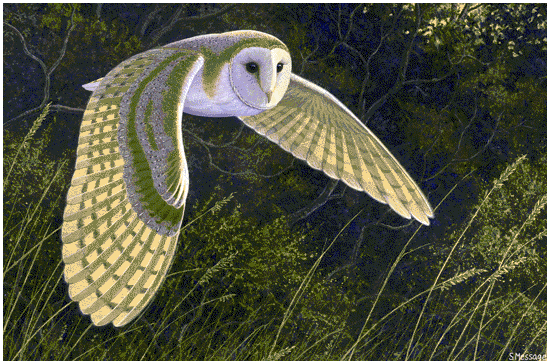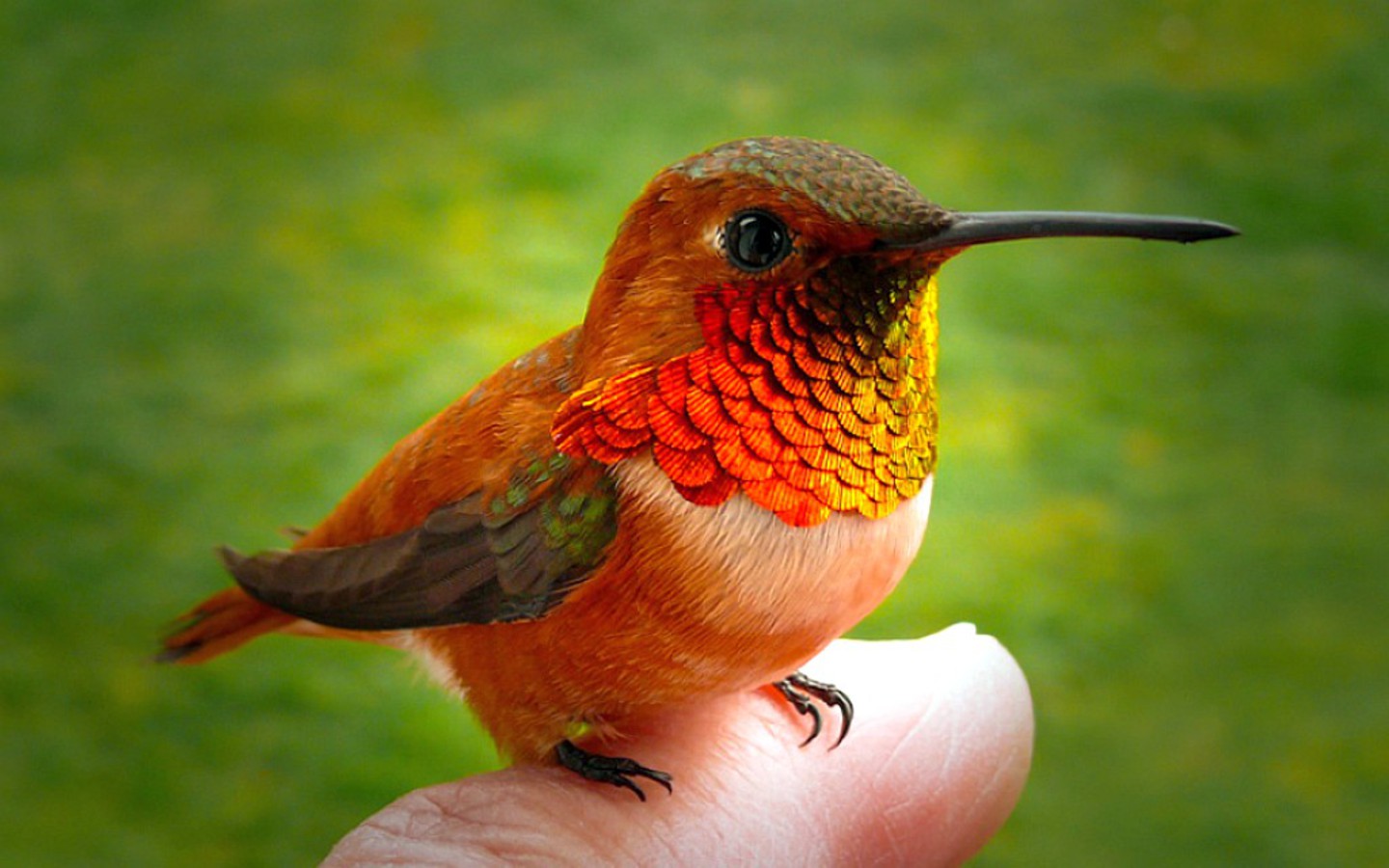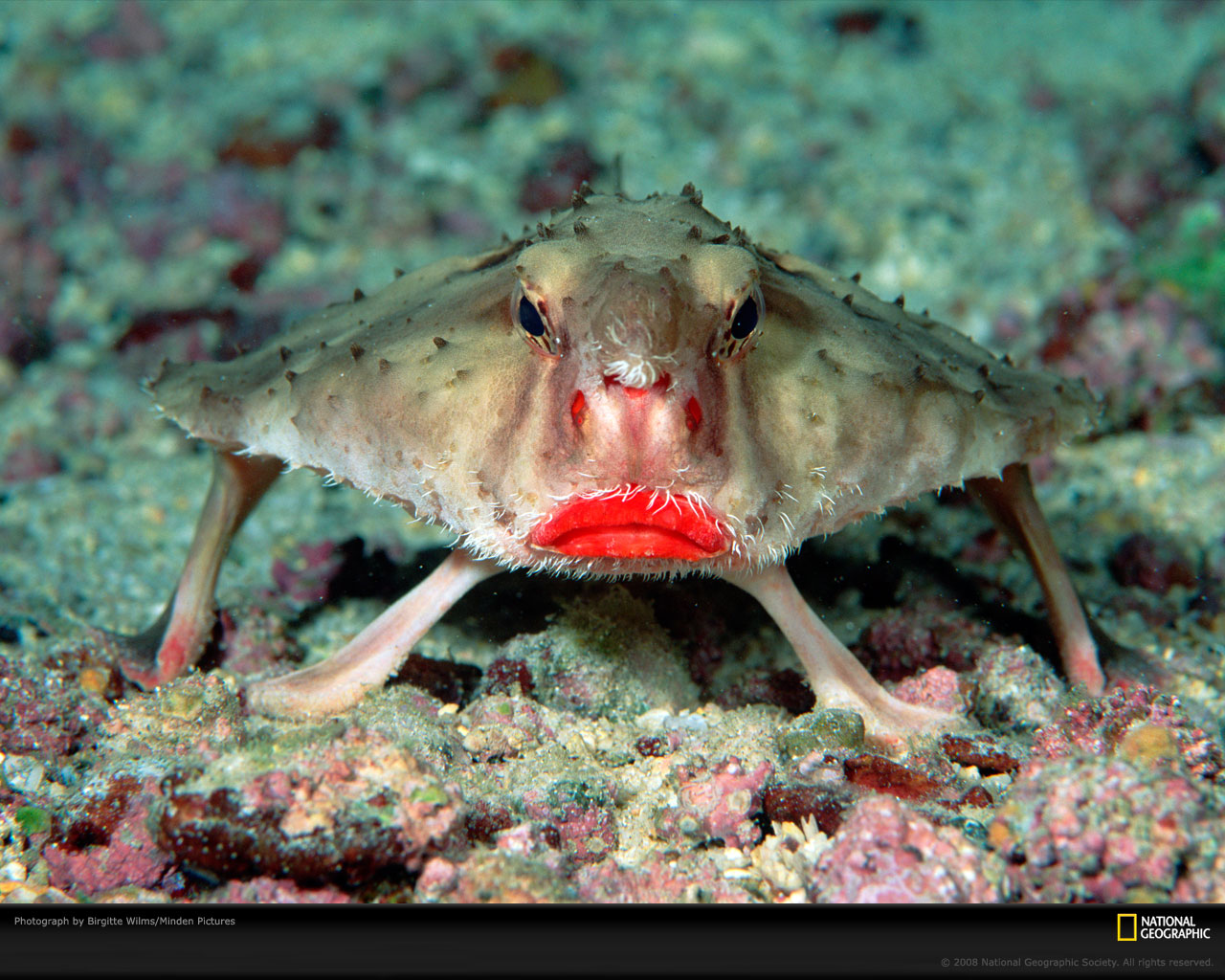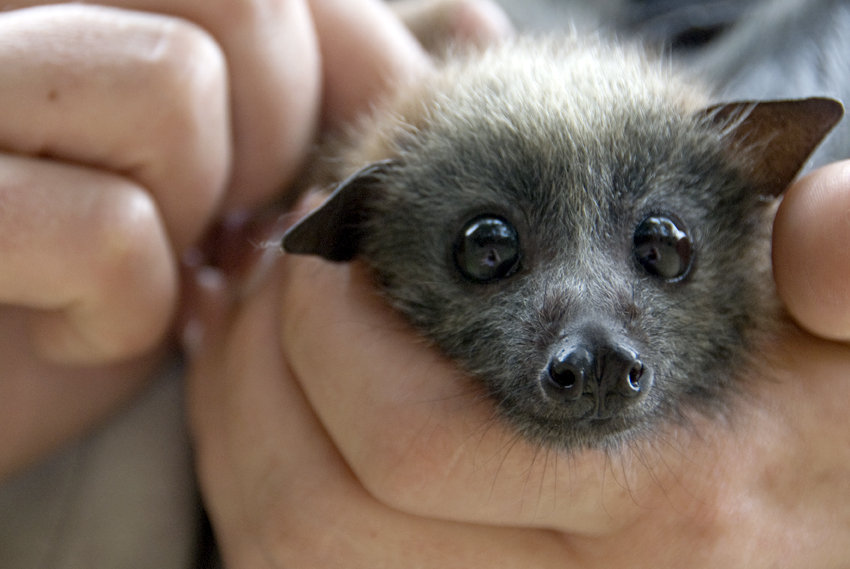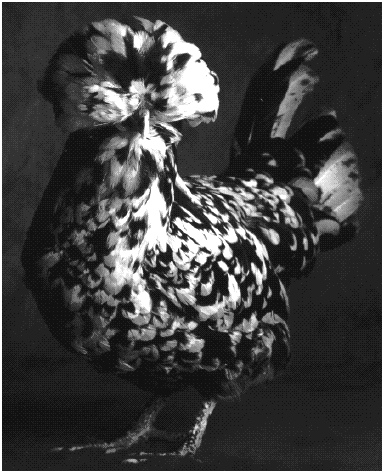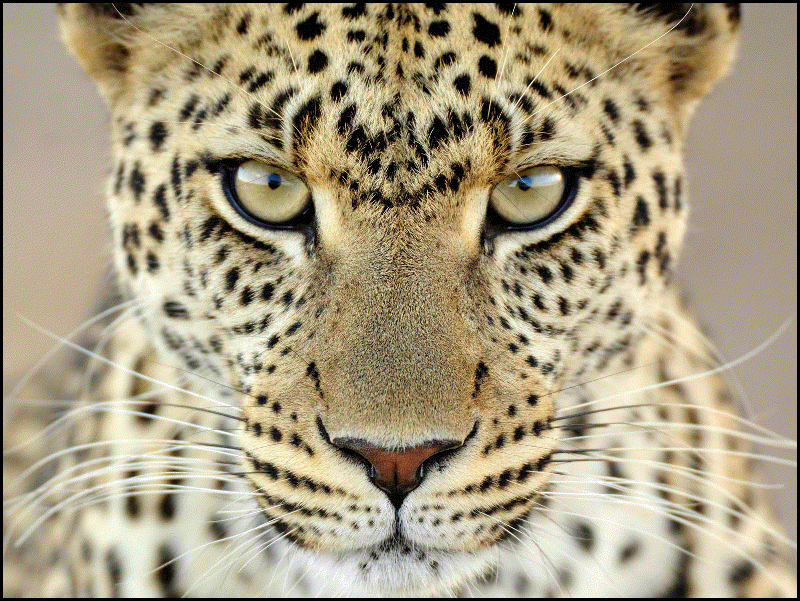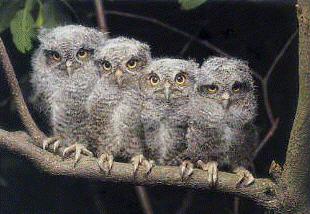For some reason, over our twenty-one year history,
it is those books dealing with birds, dogs, cats,
badgers, rats, or any other animal life
that continue to get the most interest (and the most hits).
So we've sifted through our extensive collection of book reviews
to find those fascinated with creatures of our animal farm.
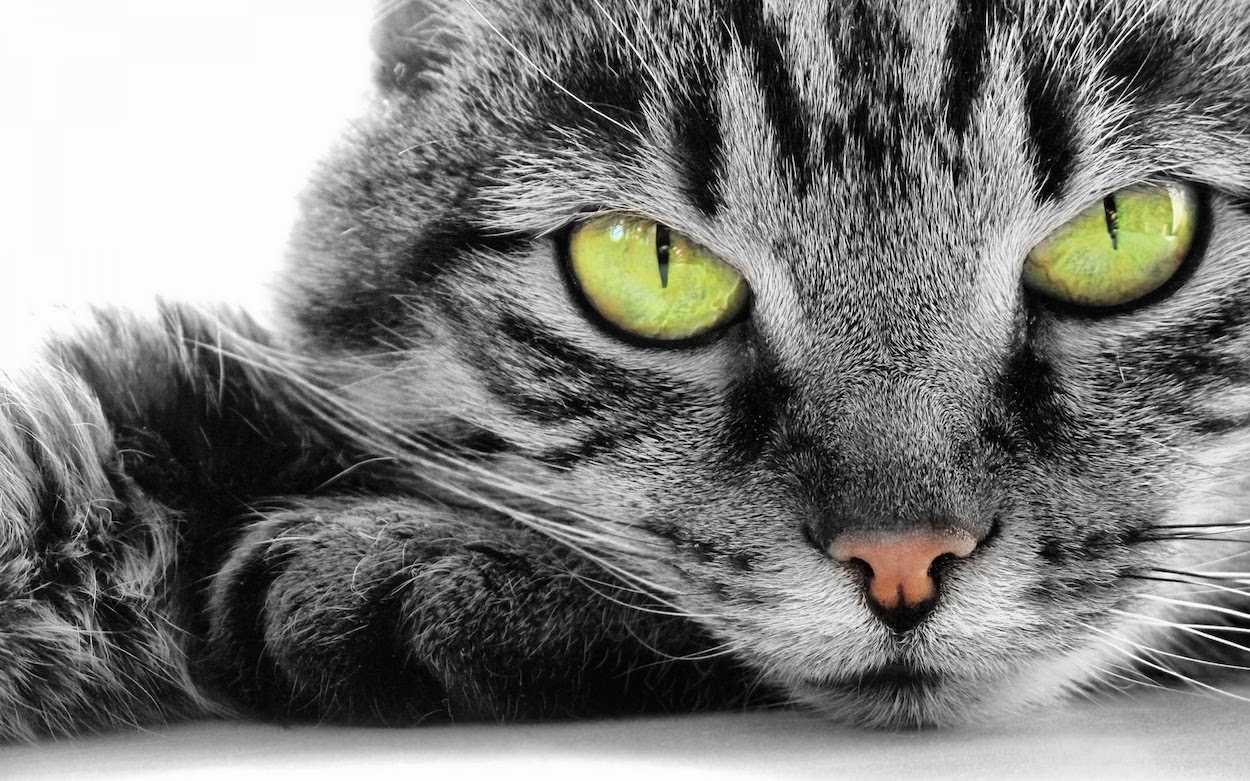 Monologue of a Dog
Monologue of a Dog
Wisława Szymborska
Clare Cavanagh
Stanislaw Barańczak
Translators
(Harcourt)The Nobel Committee sometimes gets it right, such as with the 1996 literary prize to Wisława Szymborska. She's Polish, and her poems are wistful, funny, occasionally shaking, always comprehensible. She can (and often does) write about dogs and gods and stars and tablecloths (being pulled down by very young little girls). She writes about dying and graveyards, graveyards with "tiny graves" --- but the verses are never sententious, never teary:Here lie little Zosia, Jacek, Dominik,
prematurely stripped of the sun, the moon,
the clouds, the turning seasons.Hers is not so much a questioning as a round gentle O of wonder:
Let people exist if they want,
and then die, one after another:
clouds simply don't care
what they're up to
She reminds us of E. E. Cummings: funny, sly, shy to condemn, wondering, wondering, always wondering ... why, for instance "we have a soul at times" but "no one's got it non-stop,/for keeps."
She also brings to mind Lawrence Ferlinghetti before he got swept up by Too Much Fame. She got Fame, too, but evidently, unlike him, it did not upset her balance, nor her wistfulness, especially when we find her writing lines like,
let's act like very special guests of honor
at the district fireman's ball,
dance to the beat of the local oompah band,
and pretend that it's the ball
to end all balls.I can't speak for others ---
for me this is
misery and happiness enough:just this sleepy backwater
where even the stars have time to burn
while winking at us
unintentionally.It is those jumps that make us want to ring her up right this minute and invite her to the annual Carpathian Firemen's Ball; or perhaps, if she is adverse to a night dancing the polka, to spend a few hours lying about her yard gazing at Orion winking. Unintentionally.
Go to the full
reviewBarn Owl
David Chandler
(Firefly Books)David Chandler only confirms our hesitation in embracing the common owl. He says that one of their main byproducts are "owl pellets." These consist of old meals, regurgitated from the belly of the beast and left on the nest floor to fester.He reports that "poking around in pellets is a fascinating business." Well, perhaps for him. I'm not so sure about the rest of us. For those into regurgitation, there are visual close-ups of these, but if you are checking out Owls at snack time, you might want to come back for a fuller viewing later on.
There seems to be some fairly intense research into the size, shape, and contents of these ghastly objets d'art, and at the end of the chapter, there is a minute dissection of them by date. "Fresh out of the owl" is "Soft, squidgy and steaming!" (my Webster's seems to have misplaced the word "squidgy.") At "12 months plus," we find that the pellet has adopted a whole new lifestyle: "Clothes moth caterpillars hatch in the pellet, eat the fur and leave the bones." Bringing to mind ... to my mind, anyway ... a favorite song from my youth:
Save the bones for Henry Jones
'Cause Henry don't eat no meat!
In a chapter hidden towards the end of the book, there are full-color shots of a typical Barn Owl nest, which is littered with a choice assortment of these very pellets, intermixed with dozens of dead and dying mice.Evidently, when courting, the male Barn Owl will rustle through his collection of leftovers in his nest and present the light of his life with a partially-decayed mouselet, which she will then hold lovingly in her beak as he does his business with her. "She usually grips it in her bill during coition and gulps it down afterwards," but "If she is not hungry, she puts the item to one side instead."
Finally, if you think that all owls are hooters, you're wrong. "One thing they do not do is hoot," says our author. Their vocal repertoire is more diverse than that,
including twitters, chirrups, hisses, squeaks, clicks, and perhaps best known of all, some impressive screeches and snores.
Go to the full
reviewThe TigerThere is no creature in the taiga that is off limits to the tiger; it alone can mete out death at will. Amur tigers have been known to eat everything from salmon and ducks to adult brown bears. There are few wolves in Primorye, not because the environment doesn't suit them, but because the tigers eat them too. The Amur tiger, it could be said, takes a Stalinist approach to competition. It is also an extraordinarily versatile predator, able to survive in temperatures ranging from fifty below zero Fahrenheit to one hundred above, and to turn virtually any environment to its advantage. Though typically a forest dweller, Amur tigers may hunt on the beaches as well, using sea fog as a cover for stalking game, and driving animals into heavy surf before subduing them. One young male was observed subsisting exclusively on harbor seals, going so far as to stack their carcasses like logs for future use.Unlike most cats, tigers are skilled, even avid, swimmers, and there are hunters and fishermen on the Bikin River who have had tigers crawl into their boats. Many encounters, including those observed by scientists and captured on video, seem lifted from myth or fiction. The occurrence, and subsequent recounting, of such incidents over dozens of millennia has embedded the tiger in our consciousness. The tiger has been a fellow traveler on our evolutionary journey and, in this sense, it is our peer. In Asia, there is no recess of human memory in which there has not --- somewhere --- lurked a tiger. As a result, this animal looms over the collective imagination of native and newcomer alike.
Within every major ecosystem nature has produced, she has evolved a singularly formidable predator to rule over it. In Primorye, the Amur tiger is the latest, most exquisitely lethal manifestation of this creative impulse. The indigenous peoples of Primorye --- the Udeghe, Nanai, and Orochi --- have always understood and acknowledged the tiger's supremacy, and some clans claimed the tiger as a direct ancestor as much to placate it as to share its power. There appears to be no ritual of tiger killing here (as there is for bears), but there are many stories of tigers taking human wives --- and husbands --- and of tigers killing humans who dared to challenge them. The tiger, as indigenous peoples know it, is a consummate hunter and the undisputed lord of the taiga, possessing the ability to change shape or disappear at will. Shrines were erected in the tiger's honor, and some of these remain; hunters would lay their weapons down and beg forgiveness if they crossed its path.
Go to the full
readingFrogs
Inside Their
Remarkable World
Ellin Beltz
(Firefly)
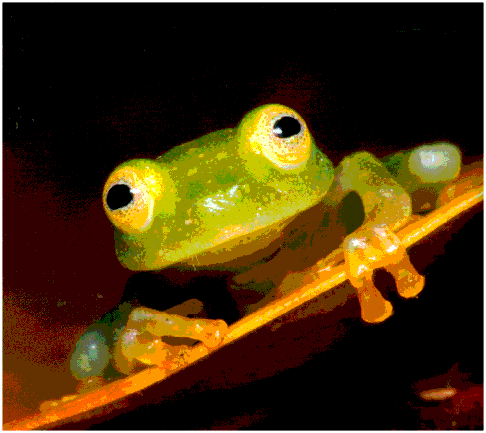
A toad can lay 20,000 eggs at a sitting and one study found that they eat 1,000 ants a day. Since Americans are fond of putting pesticides on their lawns, and since pesticides kill toads and frogs, they have disappeared and ants, as you may have noticed, are taking over your kitchen. Kids don't like toads because you pick one up and it pees on you ... and that story we reported in a previous issue about licking desert toads to get stoned is, according to the author, pure apocrypha. Do this to the Colorado River toad and you'll get virulently ill: they are so ugly that even a stoner would be a nut to try.The author does not differentiate between frogs and toads for the simple reason that all toads are frogs. She also tells us that there are frogs that squeak, those that have hair, and the Australian green treefrog's name, Litoria caerulea, means "blue." Figure that one out. They are beautiful, if your taste runs to blue frogs, but the most beautiful of them all, if you ask me, is Reinwardt's flying frog, which sports yellow webs on its little green feet. And the African bullfrog looks just like my Uncle Carl after a big drunk, when you ask him how he's feeling. He's a little blue, too, and glowers.
Go to the full
reviewBirds
The Art of
Ornithology
Jonathan Elphick
(Rizzoli International)
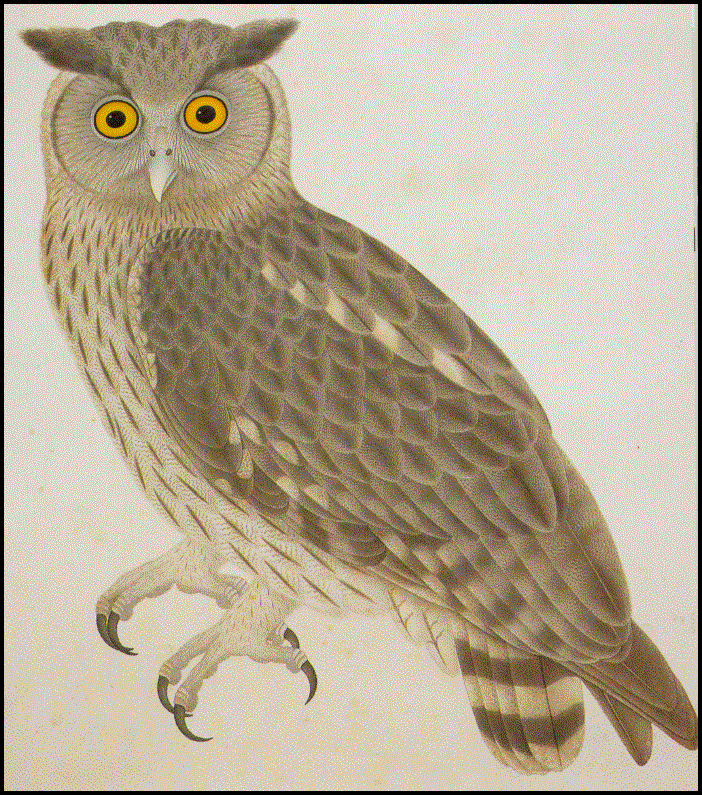
There are 212 plates in Birds, plus a few drawings dotted about here and there, including Leonardo's famous sketch of bird with wing. All are drawn from the Natural History Museum in London which has almost 1,000,000 books and 500,000 "works of art on paper." This means you are getting about .0004% of the museum's entire collection.It ain't much, but what appears here is devilishly beautiful. It is arranged chronologically, starting with a woodcut from 1492 by one Hortus Sanitatis --- a village scene with eight birds --- followed by a 1550 watercolor, a ferociously beautiful ruffle-tailed rooster (technically a "jungle fowl," father to all our present day chickens).
The chronological arrangement in Birds makes it possible for us to see why John James Audubon was so special. In contrast to those who came before him in the bird-sketch biz, his drawings had life, such life. Most of his predecessors, such as George Raper and Sarah Stone, were in the decorative business, making watercolors which were gorgeous, colorful, and stationary.
Fourteen of Audubon's representations are included in Birds. They veritably jump off the page. Audubon was haunted by more than birds. He was beset by the idea of producing the most gorgeous book of them all: he was forever and a day lugging his prints around, searching for the finest printer. Birds of America, finally issued in England, cost $100,000 in 1830's currency ... well over a million dollars today. The book was printed in "double elephant folio," more than three feet long by two feet wide. Not only was it big and heavy, it bankrupted everyone involved --- printers, publisher, author, distributors. The only ones who didn't go broke were the birds.
Go to the full
reviewMy Black Cat
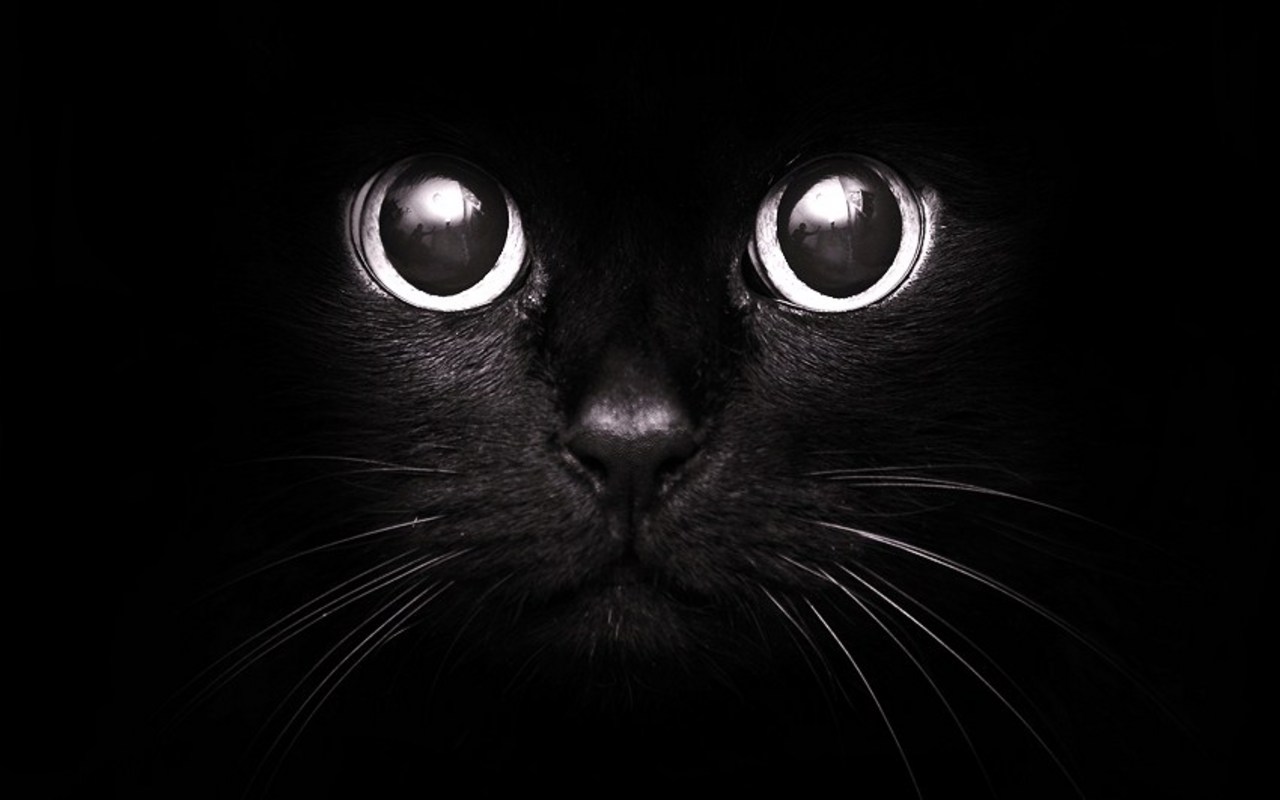
My black cat gave birth last night
Four and five make nine-o ...
One of them had deep blue eyes
Eyes as pretty as mine-o.Mother said that they must go
Drown them in the well-o ...
So I hid the little one in my shoe
The one with eyes like mine-o.
Hummingbirds
Ronald Orenstein
(Firefly Books)Their names came from the humming sounds made with their wings (the Indians of Northern California called them the "Uhmunums"), beating, in some cases, more than fifty times a second. Metabolism is a bit of a survival problem for your common hummingbird. They can inhale/exhale 250 times a minute. During the day their little hearts beat up to 1,250 times a minute, though when they fall in love, these wee parts have been known to vibrate at double that rate, make them go into a tailspin, need counseling.There are almost 350 species of hummingbirds around (they reside only in the New World, mostly in South America). Some live on as much as five years, but a branded broad-tail hummingbird was found to have survived twelve years . . . getting gray and irritable in the last years of her little life, complaining repeatedly about the cold, please to shut the front door.
And you'll find that male hummingbirds are a tad sexist, to say the least. After coitus (which can last up to three-fifths of a second), he takes off for the nearest bar while the female of the species devotes herself for two to three weeks to build the nest . . . culling ferns, mosses, and spiderwebs . . . and then lay the bitty eggs. She'll then hatch them, and feed the little ones, but if the male tries to take credit, he is scolded with a series of twitterings which tell him what a drunken lout he is. Baby hummingbirds are fed by regurgitation.
Their wings do a figure 8 when flying: the bird gets 25% of the uplift on the down-cycle, 75% on the up-draft. During courtship, when the males show their stuff, their downflights can reach 10g (of gravitational force) which, for a regular fighter pilot, is enough to make one doze off.
Go to the full
reviewPenguins of the World
Wayne Lynch
(Firefly)

Wayne Lynch is a penguinophile. He goes to visit them in Antarctica, the Falklands, Macquarie Island, New Zealand, Cape Horn. He seems to know everything there is to know about penguins: that they have been clocked moving through the water at nine miles-per-hour; that the smallest --- the Fairy Penguin -- weighs less than three pounds and lives along the coast of New Zealand and southern Australia; that there are almost ten million Macaroni penguins but the one that I slept with as a child was most likely modeled on the Adélie.The biggest threat to penguins is a bird called the skua, although up to a few decades ago, humans murdered them to light their oil lamps and to enjoy in a stew. In 1902, while studying them, the geologist Otto Nordenskjöld reported eating "cold penguin and sardines; salted penguin; macaroni and salted penguin; breast of penguin and dried vegetables; salted penguin and beans; and pastry with leftover penguin."There are a few things that Lynch neglects to tell us, though. One is the stink of a penguin rookery, with all its guano phew, you can't imagine. Another is where the Macaroni penguin got its name? (Did Nordenskjöld's menu offer Macaroni and macaroni?) No to the first: these penguins have colorful feathers; "macaroni" was the flamboyant head-dress of the 18th Century; the plumes on hats (and heads) were show-off stuff --- see "Yankee Doodle Dandy."
Go to the full
reviewMy Best Friend's Ghost
Douglas Cruickshank
I live in a small town, in an old neighborhood on a quiet street. During the past few months, a couple of times a week, I emerge from my nighttime slumber, but before the anxiety engine builds up a head of steam, I hear, clearly and distinctly, breathing --- right there in the room with me. And as I come fully awake and listen I recognize it as the slow, measured inhale and exhale of my giant dog, a 200-pound shaggy, black, extremely amiable Newfoundland, who doesn't sleep so much as go into a coma. Sometimes he'll shift and paw the carpet, snag his nail and shake it loose, but he never really comes to consciousness. In and out he breathes with soothing metronome regularity. His utter calm is contagious, and in no more than a few minutes, I drift back to sleep. On several occasions, I've heard him out in the living room or in the kitchen --- he tends to migrate between the same three or four spots through the night, never entirely waking up as he moves --- walking slowly and heavily to a new resting place, maybe turning a few times, then letting himself fall to the floor with a soft thud. I've always found it comforting to hear this great, laid-back creature that resembles a miniature buffalo moving about at night. And I still do.The odd part is he died nearly five months ago.
I've never believed in ghosts, but thanks to this new series of very welcome nocturnal visitations, I'm now all in favor of them. When I told one woman this story, she said, "Ah, he's still in the house then." That seemed as likely an explanation as anything I've come up with. And when I asked a friend about her view of ghosts, she thought for a minute, then said, "I guess they're sort of our vapor trails." Indeed.
Go to the full
articleSweet Dumb Doggie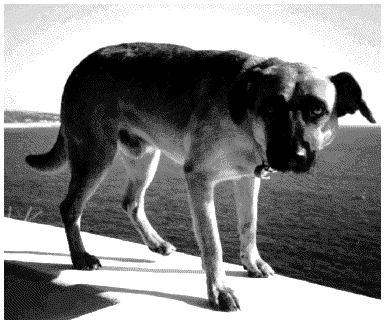 He stands, in the altogether, at twenty-three inches. He has four paws, a tail, and fine tan dog-hair --- except for on the ears and the nose and around the eyes, all touched with black. It gives him a very grave look, like those monkeys in the zoo that look sweet and querelous and smart and you want to take them home with you.
He stands, in the altogether, at twenty-three inches. He has four paws, a tail, and fine tan dog-hair --- except for on the ears and the nose and around the eyes, all touched with black. It gives him a very grave look, like those monkeys in the zoo that look sweet and querelous and smart and you want to take them home with you.Even though he looks like a dog, and smells like a dog, Doggie still thinks he is a people. This means that whenever I go out --- to the P.O., to the store, to the doctor's office --- he has to tag along, just to be sure that I am not running away from home, and him, leaving him out of all the fun of life.
When I go out, there are times when a Doggie is inappropriate, so I try to leave him at home. Fat chance. He has found a mysterious door that leads directly from my bedroom to the world. On top of that, he has the ability to fly. Which means when I get down around Broadway, I see a tan blur in the car-mirror which tells me that my frolicksome buddy is following me at Mach 2.
So I stop traffic, and open the door and tell him to get in ("Get in, you lunch-head") and he hops up, stomping his big hairy foot on my nuts as he heads for the back seat.
For our trip to Dr. Feelgood's, he plants his forepaws on the front seat, and rests his sweet little pin-head on my right shoulder. Since he thinks he is a people, on top of his other chores he has to supervise my driving.
This means that when I go to make a right turn, and look to the right, he turns his head to the left and gives me a big French kiss with his two-footer tongue, right in the mouth. (Moments before, he was using his tongue to clean his privates. What a pal!)
Go to the full
articleInto the Night
Tales of Nocturnal
Wildlife Expeditions
Rick A. Adams,
Editor
(University Press of Colorado)It's called Into the Night, but perhaps it would be better titled Scientific Lunatics Abroad Studying Packrats, Fruitbats, and Walking Batfish.You may recall that centuries ago people's futures were foretold by eviscerating a chicken and reading the gizzards. Here we travel all the way to Africa to study bat-poop --- not to look into the future, but to understand the present. Frank Bonaccorso's assignment has to do with a recent lack of figs in the countryside near the Shingwedzi River water basin in South Africa. He tracks down fruitbats and a sycamore --- a fig-tree sycamore. There should be figs on it, no?
However, during times of meteorological uproar --- read global warming --- the figs and even the fig-trees disappear, and the question becomes what's going to happen to the many animals dependent on it. Since fruitbats are expert disseminators of the seed of the syconium, are they doing their jobs by eating the figs, spreading their poop (and fig seeds) all about Kruger National Park? And are the other animals coöperating?
For instance, are fig seedlings are being trampled to death by lions, leopards, African buffalo, rhinos, or the "120,000 impala, 30,000 zebra, or 13,000 elephants, or various other grazers and browsers?" How can we make sure that enough new fruiting sycamores appear so that all the animals survive? Thus Bonaccorso's research involving the "Walberg's" and "Peter's" bats of this area.
Go to the full
reviewThe Fairest Fowl
Portraits of Championship
Chickens
Ira Glass
(Photographs by
Tamara Staples)
(Chronicle)For some of us, our creature of choice is a bird. For a very few of us ---at least for the few of us brave enough to admit it --- it's a chicken. There are some limits to this animal love, though...at least with poultry. Those of us who are chicken heads don't necessarily have the powerful resonance of a horse person, for instance. Which is to say, when I sit down to a Chicken Dee-lite™ snack, I don't necessarily think of myself as a cannibal.At the same time, I like raising them, I like watching them, and most especially I like that superb moment when you look through the clear plastic of the incubator and your twenty or so eggs that have been slowly and mutely baking there for three weeks at 99.5º split apart and suddenly there's an army of peeping, bug-eyed, two-legged slippery wet creatures who will soon enough turn into creatures of some grace, if not sporting too much in the way of brain cells.
For the last few years, I have been raising fowl, but not the commercial variety --- those Rhode Island Reds or White Leghorns that are designed for drumsticks at KFC, or to have their newly delivered babies scrambled up with mushrooms and butter and tarragon yum.
No, I'm looking for the more risible members of the chicken world. My favorite reading matter --- next to Harpers, The London Review of Books, and Diaper Bondage --- is the Poultry Press. In it I've found some birds that the professionals call "The Fancy." If you don't think chickens can, in any way, be fancy --- you might take a gander, as it were, at the thirty that Staples and Glass have collected together here in The Fairest Fowl.
Go to the full
reviewFinding a Lion
In Your BedroomTowards the end of my stay in British East Africa, I dined one evening with Mr. Ryall, the Superintendent of the Police, in his inspection carriage on the railway. Poor Ryall! I little thought then what a terrible fate was to overtake him only a few months later in that very carriage in which we dined.A man-eating lion had taken up his quarters at a little roadside station called Kimaa, and had developed an extraordinary taste for the members of the railway staff. He was a most daring brute, quite indifferent as to whether he carried off the station master, the signalman, or the pointsman; and one night, in his efforts to obtain a meal, he actually climbed up on to the roof of the station buildings and tried to tear off the corrugated-iron sheets. At this the terrified baboo in charge of the telegraph instrument below sent the following laconic message to the Traffic Manager:
Lion fighting with station. Send urgent succour.Fortunately he was not victorious in his "fight with the station;" but he tried so hard to get in that he cut his feet badly on the iron sheeting, leaving large blood-stains on the roof.Another night, however, he succeeded in carrying off the native driver of the pumping-engine, and soon afterwards added several other victims to his list.
On one occasion an engine-driver arranged to sit up all night in a large iron water-tank in the hope of getting a shot at him, and had a loop-hole cut in the side of the tank from which to fire. But as so often happens, the hunter became the hunted; the lion turned up in the middle of the night, overthrew the tank and actually tried to drag the driver out through the narrow circular hole in the top through which he had squeezed in.
Fortunately the tank was just too deep for the brute to be able to reach the man at the bottom; but the latter was naturally half paralysed with fear and had to crouch so low down as to be unable to take anything like proper aim. He fired, however, and succeeded in frightening the lion away for the time being. It was in a vain attempt to destroy this pest that poor Ryall met his tragic and untimely end.
Go to the full
review
Kafka's Leopards
Moacyr Scliar
Thomas O. Beebee, Translator
(Texas Tech University Press)Benjamin Kantarovitch is a Communist, and a bumbler. In fact, he's more of a bumbler than a Communist. They call him Mousy (he looks like a "house-mouse"), and he lives in the village of Chernovitsky, not far from Odessa. His cell-leader is named Yossi. Yossi had met with Trotsky in Paris shortly before and became a convert.The party is sending Yossi to Prague, but he takes ill. He elects Mousy to go in his stead, where he will call another party member and repeat the words, "They sent me to receive the text." Then he will execute the grand plan ... possibly involving sabotage.
Mousy has never been out of Chernovitsky in his life. But Yossi is his comrade, so he dutifully goes to Prague. Being Mousy, he loses his satchel with all the instructions, the secret code, and the plans. So he asks the clerk at the Terminus Hotel for the name of a man who was described by Yossi as "a Jew like us ... a writer."
The hotel clerk says that he's only heard of two writers in Prague: "One is Max Brod, a very nice guy. The other one is Franz Kafka. Sort of an oddball ..." Mousy dutifully calls Kafka (he has to be shown how to use a telephone) and tells Kafka to send him "The Message." Which Kafka dutifully does:
Leopards break into the temple
and drink up the offering in the chalices.
This happens again and again.
Finally, one can predict their action in advance
and it becomes part of the ceremony.
Go to the full
review
The Animal That
Therefore I Am
Jacques Derrida
Marie-Louise Mallet, Editor
David Wills, Translator
(Fordham University Press)What can you say? It's Jacques Derrida, and it is the third of four ten-hour (sic) lectures that he gave in 1997. His primary question is this: what does your cat think when you stand naked before it?You mean, that's it? Yep: it all comes down to Derrida's feeling of shame there bare-assed naked before Tabby's naked eyes.After some meditations on "fleece" (Freud's "A Silkworm of One's Own"), he confesses that he feels "a shame of being ashamed of shame, the potential fault that consists in being ashamed of a fault about which I'll never know whether it was one."I am ashamed of almost always tending toward a gesture of shame when appearing naked before what one calls an animal, a cat, for example, a seeing animal naked down to its hair...
He then goes off, I swear to you, into a series of meditations on watching an animal sleep ... perhaps to dream. Does a cat dream? Does it think? If so, in what language? It all reminds us of that eternal question of Buddha's dog, the Universal Dog: "Does a dog have the Buddha-nature?"§ § § Whoever put this one together for Fordham University Press thinks that The Animal That Therefore I Am has to do with the "modern industrialized treatment of animals." I doubt it. The real emphasis is the difference between you and me and our pet, clothed or unclothed.
John Bateson might have known. He argued that when you open the door of the refrigerator the cat says "Mrkrgnao" (Joyce's choice of words, not my own). This isn't to be translated as "milk" but rather as dependence.
Go to the full
reviewOwls
Cynthia Berger
(Stackpole)Not only are their table-manners deplorable, their accommodations are vomit-inducing. The Screech Owl will typically have a nest filled up with various types of garbage. "The bottom of an owl's nest makes a nice home," says Ms. Berger, although we believe the word "nice" here should be considered relative. "It's a messy mulch of its own feces, coughed up owl pellets, and the remains of prey such as mice and beetles."Ants and fly maggots move in to feed on this, so it becomes a stinkpot cafeteria. To make it even more vile, some owls bring home Texas blind snakes --- live ones --- who, once in the nest, defecate and release "a noxious, smelly liquid, then writhe so that the slippery mess coats their small bodies."
No one can figure out why owls bring home these disgusting characters to be their roommates. It reminds us of Ms. Downey, down the street, who lives with thirty-five (or thirty-eight, or forty-three) cats: the atmosphere downwind from her house can peel the bark off our elms.
Owls has, without much effort, managed to temper our interest in getting to know the Spotted Owl or Ferruginous Pygmy-Owl or the Flammulated Owl. In this volume, there are, in all, eighteen species pictured. Ms. Berger shows herself to be a lively, companionable and occasionally zany expert on these characters.
Owls, by the way, don't just hoot. They also purr, snore, hiss, chirrup, twitter, whinny, and, when they hear a funny joke, chuckle. Didja hear the one about the Screech Owl that went into the bar...
They also go boop-boop-boop. Just like Little Richard.
Go to the full
reading
